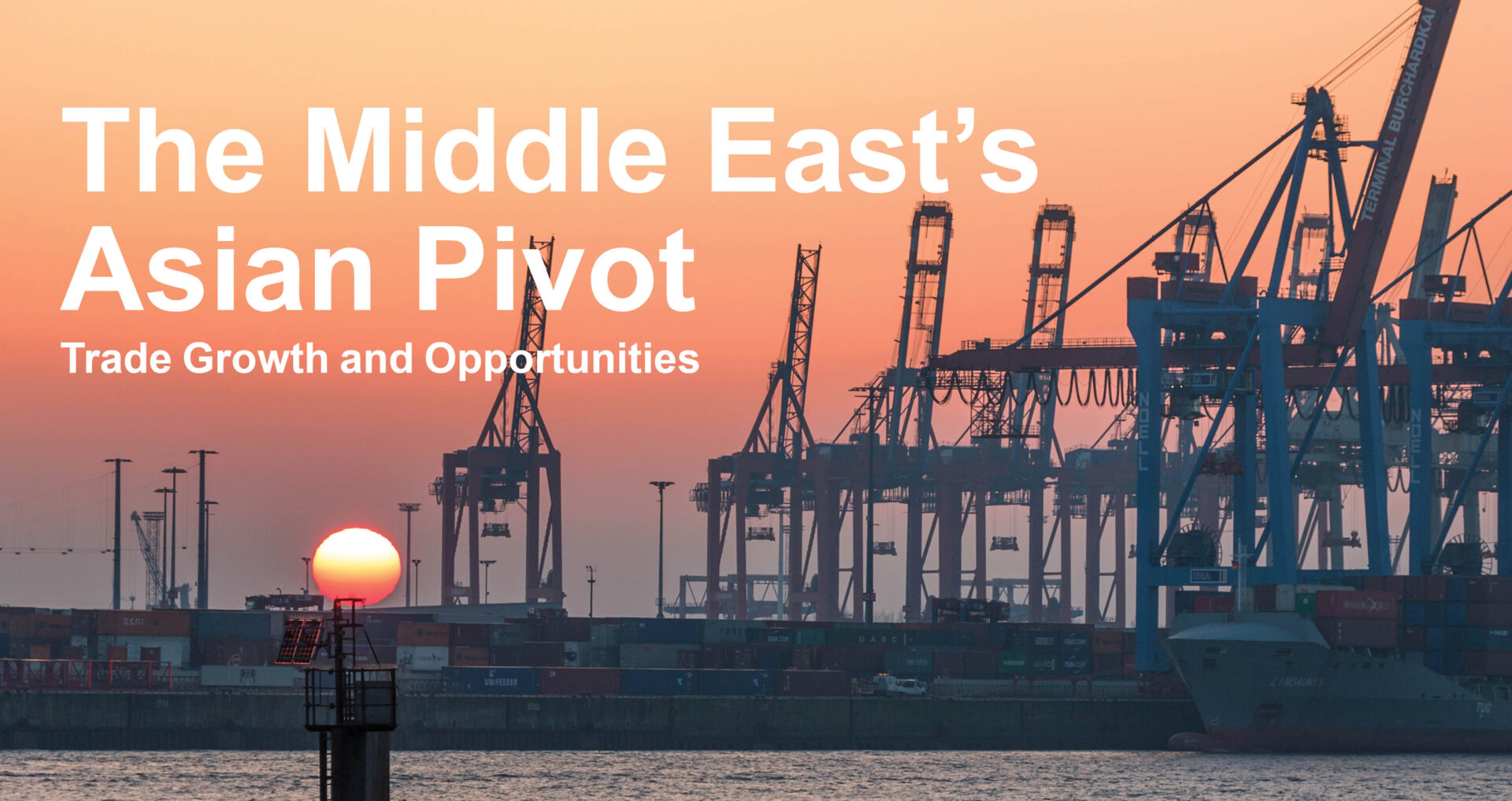Driving commercial and political engagement between Asia, the Middle East and Europe
Driving commercial and political engagement between Asia, the Middle East and Europe
Driving commercial and political engagement between Asia, the Middle East and Europe

Middle Eastern trade with Asia has risen sharply since the turn of the century, while its trade with established markets in the OECD declined, according to new research by Asia House.
‘The Middle East’s Asian Pivot: Trade Growth and Opportunities’, analyses shifts in Middle Eastern trade since 2000, and identifies a clear move in the balance of trade towards Asia.
Overall, the OECD, which includes the most advanced Western economies, saw its share of trade with the Gulf Cooperation Council nations (GCC)* decline by 21 per cent, from 63 per cent to 42 per cent, between 2000 and 2016. This is in contrast with emerging Asian^ economies, which saw a 12 per cent increase, from 18 per cent to 30 per cent over the same period.
Emerging Asia’s annualised growth rates also exceeded those of established markets, the report found. China’s annualised trade growth with the GCC, for example, stood at 13.5 per cent between 2000 and 2016, compared to the US’s rate of 4.4 per cent. India’s annualised trade growth with the GCC over the same period was 14.7 per cent compared to the EU’s rate of 5.5 per cent.
While these Asian economies were growing from a much lower base than established Western markets – which still account for the majority of trade with the Middle East – the figures suggest a trend of rapid Asian growth coinciding with a slowing of growth with the region’s traditional trading partners.
Michael Lawrence, Chief Executive of Asia House, said: “This research points to a clear direction of travel in which Asia is acquiring a growing share of Middle Eastern trade. The report reflects a growing focus from the Middle East on emerging economies in Asia.”
According to the report, these trends are likely to continue and the economic relationship between the Middle East and Asia will grow.
The drivers of trade growth between the two regions include Asia’s increasing energy demands and the Middle East’s growing appetite for primary and secondary sector consumer goods.
The report also outlines emerging opportunities in the Middle East, including China’s Belt and Road Initiative and Saudi Arabia’s Vision2030. It identifies particular opportunities in sectors such as insurance and professional services, tourism, plastics and renewable energy.
-End-
*GCC: Saudi Arabia, United Arab Emirates, Bahrain, Kuwait, Qatar, Oman
^China, India, ASEAN
Read the full report – The Middle East’s Asian Pivot
